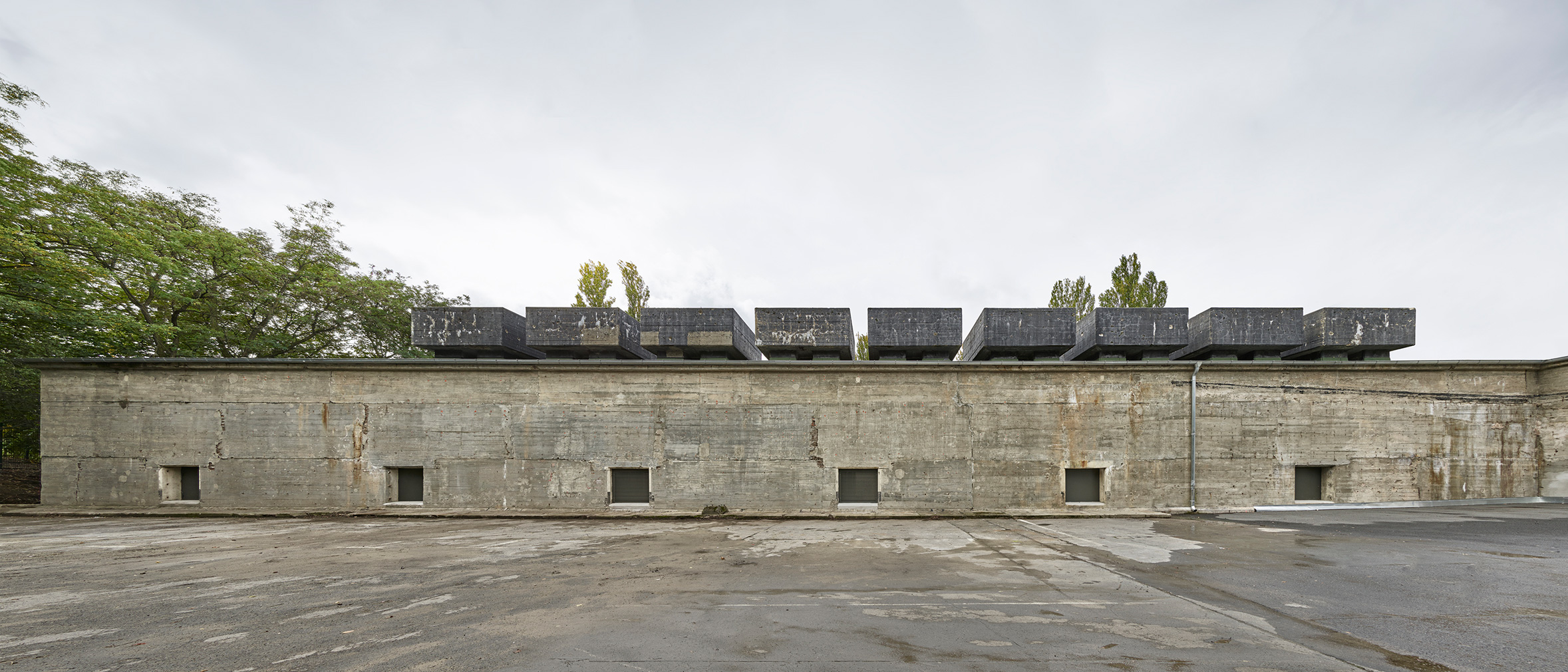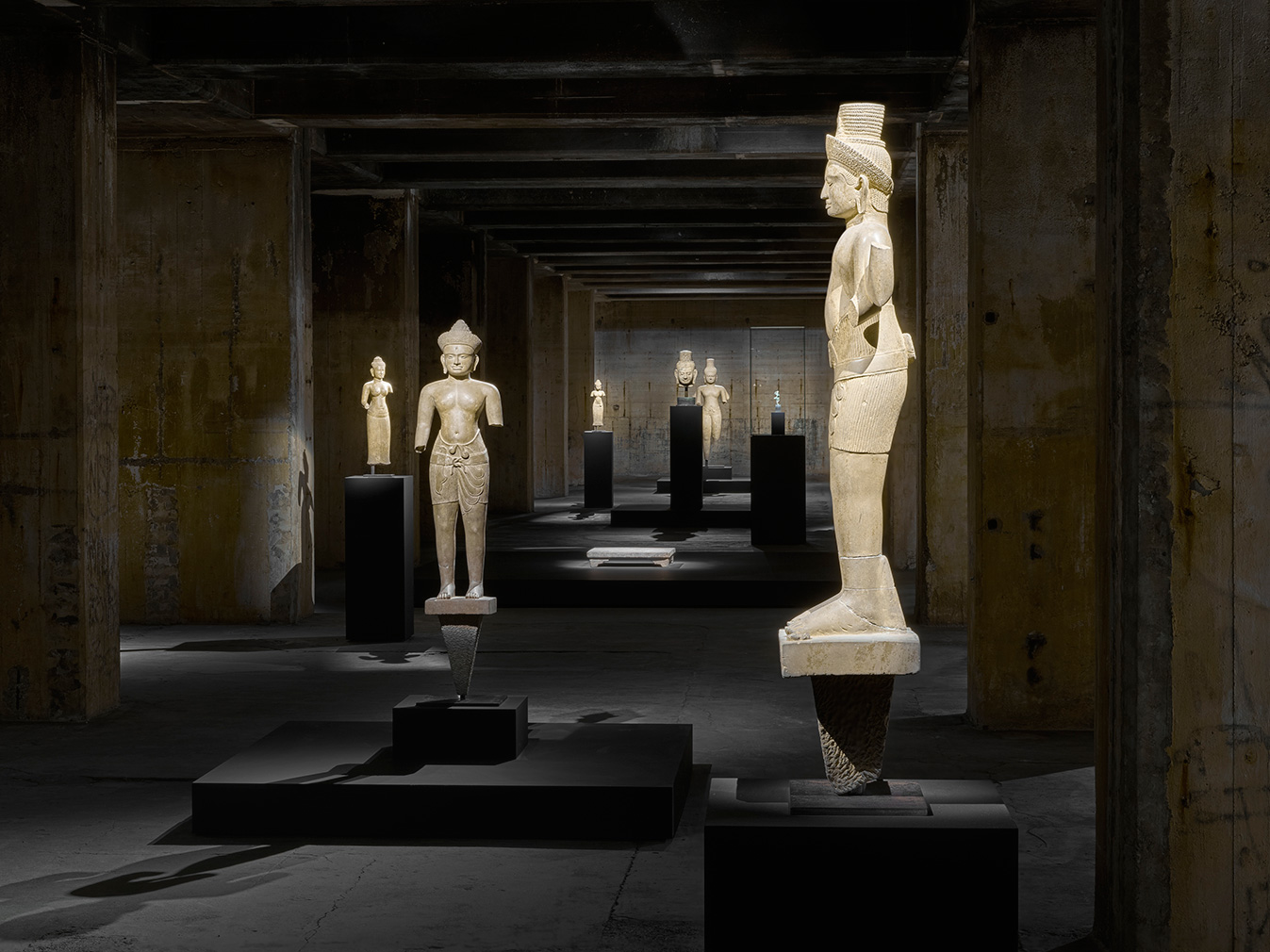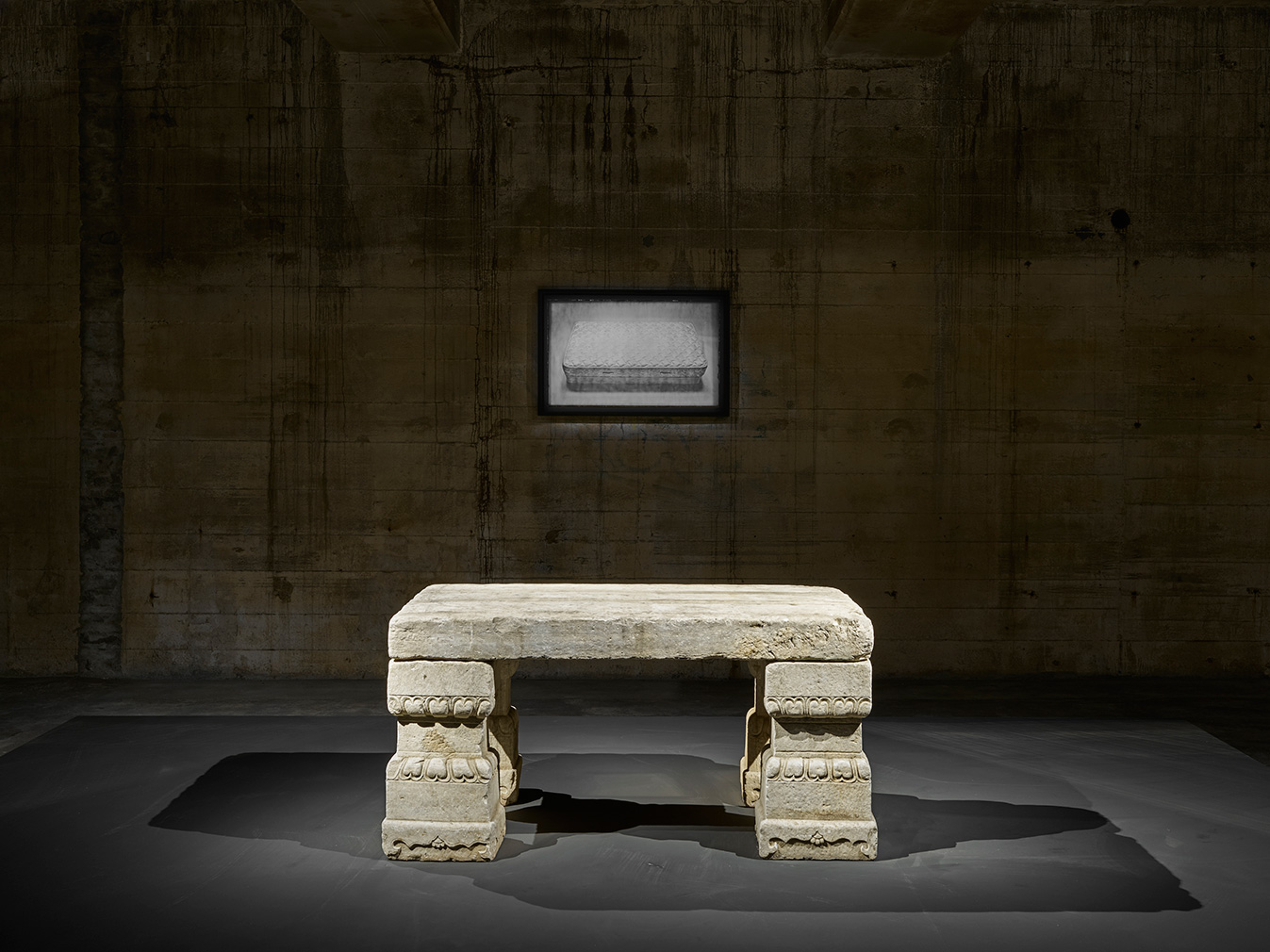Germany has a vast underworld of wartime bunkers that are slowly being put to new uses. Indestructible by nature, these hulking concrete forms – now housing everything from art galleries to clubs and apartments – have history etched onto their graffiti-lined walls.
The latest to be adapted is a telecommunications bunker in Berlin’s Kreuzberg. It now houses the Feuerle Collection, a cache of contemporary art, Imperial Chinese furniture and ancient Southeast Asian sculptures owned by Désiré Feuerle. Previewed earlier this year, the bunker opens to the public today.

Feuerle tasked John Pawson with converting the building and giving its potent atmosphere a positive charge.
‘I wanted the visitor to be seduced by an experience, something very different to what you’ll get in a conventional gallery space,’ he says.
An ‘experience’ this private museum certainly offers.
Visitors are urged to leave their mobile phones at the entrance, before being ushered into the building’s bowels and plunged into darkness. Haunting music – composed by artist John Cage – reverberates around a ‘Sound Room’, heightening your senses and drawing your attention to the bunker’s depth.
Then the theatre really begins…

Spotlit Khmer figures from the 7th to 13th centuries lure you into the gloom, their shadows dancing across the floor. Spaced out across the lower level of the bunker, these divinities and buddhas have soft, serene features that offset the rough concrete walls.
Stretching out to your left is a vast lake, which powers the museum via a geothermal heat pump. It glistens behind a glass wall, playing with the reflections of the sculptures to disorientating effect.
‘The lake is part of the gesamtkunstwerk,’ says Feuerle. ‘I see the building as a sculpture. From the outside it looks like a work by Donald Judd.’
Pawson has treated the building with the same reverence, keeping his interventions to a minimum. ‘It’s form is so simple, beautiful and understandable,’ says the architect, who has also masterminded the conversion of the Design Museum’s new London home (opening next month).

Photography: Nic Tenwiggenhorn / VG Bild-Kunst, Bonn. © The Feuerle Collection

Photography: Nic Tenwiggenhorn / VG Bild-Kunst, Bonn. © The Feuerle Collection

Photography: Nic Tenwiggenhorn / VG Bild-Kunst, Bonn. © The Feuerle Collection

Photography: Nic Tenwiggenhorn / VG Bild-Kunst, Bonn. © The Feuerle Collection

Photography: Holger Niehaus. © The Feuerle Collection

Photography: Holger Niehaus. © The Feuerle Collection

Photography: Holger Niehaus. © The Feuerle Collection

Photography: Holger Niehaus. © The Feuerle Collection
‘This is engineers’ architecture,’ he adds. ‘If someone said to me, you can have whatever you want, and the most beautiful concrete it’s possible to manufacture, it would be this. You can’t find concrete of this kind of quality today. Its patina is stunning.’
Aside from adding a glass ‘incense room’ (opening in 2017), services and lighting, much of the work involved gentle cleaning and repairing.
‘Deciding what to keep and what to remove was a constant process of reassessment,’ says Pawson, who worked with Berlin-based Petra Petersson, the architect behind the conversion of the nearby Boros Bunker.

Stalactites still protrude from ceilings, and damp stains are visible on walls.
Interventions are so discrete, one might almost ask what they have actually done. ‘That to me would be the greatest compliment,’ says Pawson, ever the minimalist. And it’s part of what makes it a pleasure to explore.
‘When you have a building with heritage, you need an architect who won’t feel a need to put their own stamp on it,’ says Feuerle. ‘A minimalist architect respects the building and takes himself out of the picture.’

The pair have choreographed the visitor’s journey through the building and set up dialogues between seemingly disparate works. In this extraordinary space, a steel sculpture by Anish Kapoor sits happily behind a 10th-century Hindu deity. Upstairs, Adam Fuss’ ‘Smoke’ photogram plays with the patina of two Ming dynasty bookcases.
‘To me there’s something equally erotic about Adam Fuss’ work and Chinese furniture,’ says Feuerle. ‘Like the building, every piece in the collection is timeless. They talk to each other across the centuries.’
And because there are no labels, you listen to them all the harder.
Visits to The Feuerle Collection must be booked in advance via the website. They are possible on Fridays, Saturdays and Sundays.
















